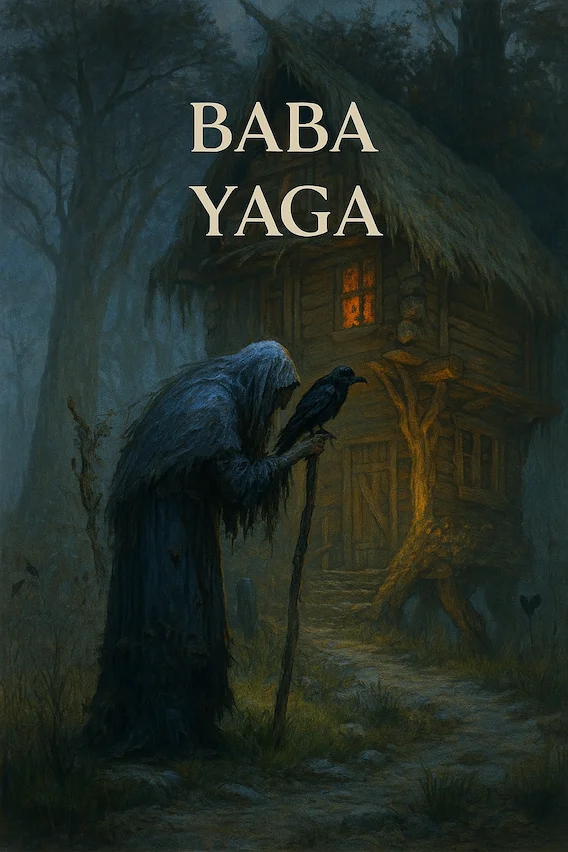Origins of Baba Yaga
Among the oldest and most mysterious figures in Slavic mythology stands Baba Yaga. While often depicted today as a frightening witch, her origins lie in reverence and protection. But what does “Yaga” really mean?
The name “Yaga” likely derives from “Yashka.” In ancient Slavic chants, “Yasha” referred to a primeval ancestor — a spiritual force deeply connected to the earth. Baba Yaga was originally a sacred matriarch, a Bereginya — guardian of children, home, family, and forest.
Transformation Through Christianity
With Christianity’s arrival in Slavic lands, many pagan deities, including protective spirits, were demonized. Baba Yaga’s image shifted from wise protector and teacher to fearsome witch living in a hut perched on chicken legs.
Enduring Spirit of the Foremother
Despite this, the spirit of the ancient foremother endured. Variations like Zlata Baba and Makosh carried Baba Yaga’s essence — strong female spirits bound to life, death, and nature’s rhythms.
Baba Yaga Today
Today, Baba Yaga remains one of folklore’s most iconic figures. Though feared, her legend reminds us how myths evolve and how forgotten wisdom echoes through dark forests and old tales.
Disclaimer:
This story is based on historical records, folklore, and publicly available sources. It may contain interpretations, myths, or legends that have evolved over time. All characters and accounts are for educational and entertainment purposes only. No part of this content promotes harmful beliefs or actions. Images are for illustration.



